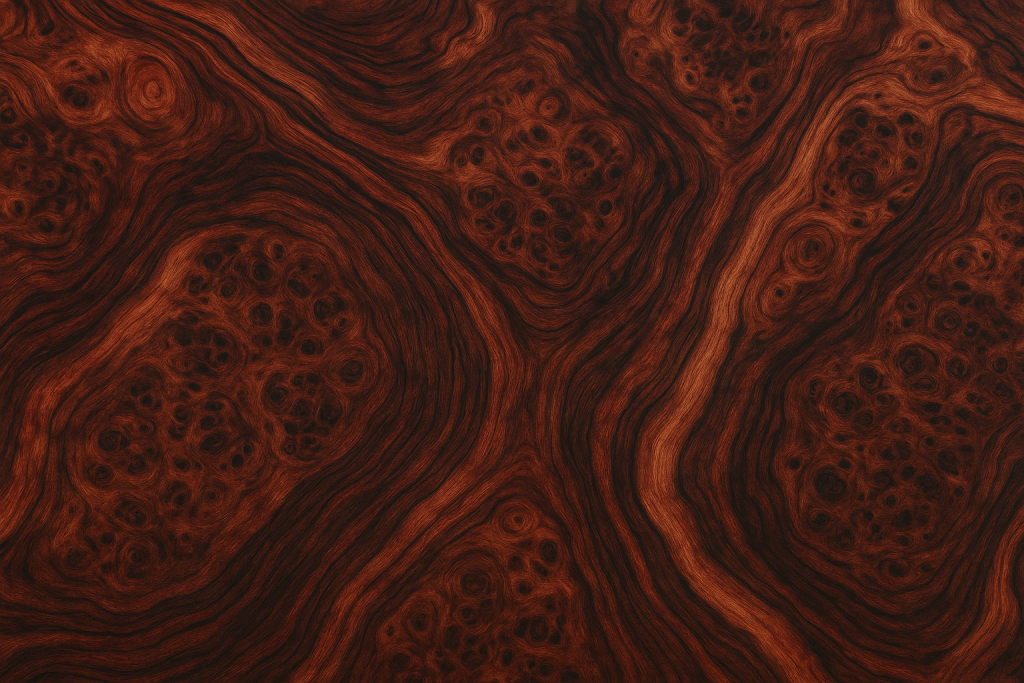⏲️ Estimated reading time: 6 min
Discover the world’s most expensive furniture wood, from Brazilian Rosewood to Macassar Ebony. Learn what makes them so rare, luxurious, and valuable for high-end furniture design, and why they’re sought after by collectors and designers alike.
The Prestige of Rare Woods
Furniture isn’t just about function it can be a statement of luxury, taste, and craftsmanship. While mass-produced items often use common woods or synthetic materials, high-end furniture relies on rare and exotic timbers. These woods not only offer unique aesthetics and textures but also represent centuries-old craftsmanship and exclusivity. So, what is the most expensive furniture wood in the world?
Let’s explore the top luxury woods that command astonishing prices and are cherished by collectors, interior designers, and artisans across the globe.
1. Brazilian Rosewood (Dalbergia nigra)
Price Estimate: $150–$300 per board foot (and rising)
Origin: Brazil
Key Features: Deep reddish-brown to purplish hues, dark veining, fragrant scent
Brazilian Rosewood, known locally as Jacarandá da Bahia, is the holy grail of furniture woods. Once widely used in musical instruments and high-end cabinetry, this wood is now under strict trade regulations due to deforestation and overharvesting. Its rarity has skyrocketed its value, making it virtually priceless in some markets.
Because it’s a CITES-protected species, selling or exporting it (unless pre-1992 harvested or reclaimed) can be illegal. However, vintage pieces made from Brazilian Rosewood are among the most expensive furniture items ever auctioned.
2. Macassar Ebony (Diospyros celebica)
Price Estimate: $150–$250 per board foot
Origin: Indonesia and the Philippines
Key Features: Black and brown streaks, high polish finish, extremely dense
Macassar Ebony is a visually striking wood, named after the port city of Makassar in Indonesia. Its bold, high-contrast grain makes it a favorite in art deco and contemporary luxury furniture.
Used in everything from luxury desks to piano veneers, its hardness makes it difficult to work with but the finished result is breathtaking. Its price continues to increase due to limited availability and slow growth.

3. African Blackwood (Dalbergia melanoxylon)
Price Estimate: $100–$200 per board foot
Origin: Central and Southern Africa
Key Features: Jet black to dark brown color, very dense, often used in musical instruments
African Blackwood is often considered one of the hardest and most durable woods in the world. It’s not only used for high-end furniture but also in the crafting of clarinets, oboes, and bagpipes due to its acoustic properties.
Its slow growth and political instability in some harvesting regions make it expensive and rare. Like other Dalbergia species, it’s listed in CITES Appendix II, restricting trade.
4. Sandalwood (Santalum album)
Price Estimate: Up to $200 per kg for wood (and much more for oil)
Origin: India, Indonesia
Key Features: Aromatic, smooth grain, used for carvings and decor
While more famous for its essential oil, Sandalwood timber is also highly valuable. Its distinctive scent makes it a prized material in religious artifacts and luxury decor. Due to overharvesting, Indian Sandalwood is now tightly controlled, with the Indian government managing many of the plantations.
Sandalwood furniture is rare and usually custom-made, often featuring intricate carvings that take advantage of its fragrant and soft nature.
5. Pink Ivory
Price Estimate: $80–$150 per board foot
Origin: Southern Africa (Zimbabwe, Mozambique, South Africa)
Key Features: Natural pink to reddish-pink hue, fine grain, very dense
Pink Ivory is one of the rarest woods on Earth, traditionally reserved for Zulu royalty. Its unique color and smooth finish make it a popular choice for inlays, handles, and high-end luxury furniture.
Its rarity, especially in large sizes suitable for furniture, makes it expensive. Often it’s used for accents or decorative furniture pieces rather than full construction.
6. Lignum Vitae (Guaiacum officinale and G. sanctum)
Price Estimate: $80–$100 per board foot
Origin: Caribbean and Central America
Key Features: Extremely heavy, oily texture, greenish-brown color, self-lubricating
Latin for “wood of life,” Lignum Vitae was once used in maritime industries due to its extreme hardness and self-lubricating properties. Today, it is highly sought after for small, extremely durable furniture elements and luxury craftwork.
Due to its endangered status and slow growth, its trade is restricted, further raising its price on the black and grey markets.
7. Bocote
Price Estimate: $30–$65 per board foot
Origin: Mexico and Central America
Key Features: Eye-catching grain patterns, golden brown with dark streaks
While not as expensive as rosewoods or ebonies, Bocote is a stunning fascinating hardwood with zebra-like patterns. Its relatively easier workability and moderate cost make it a go-to choice for furniture makers seeking fascinating flair without the extreme price tag.
Due to increasing demand and limited supply, Bocote prices have been rising steadily.
8. Agarwood (Aquilaria spp.)
Price Estimate: Up to $100,000/kg for resinous heartwood
Origin: Southeast Asia
Key Features: Resin-impregnated wood, dark and fragrant, extremely rare
While Agarwood is more famous for its oil (oud), the wood itself is prized in certain luxury decor and furniture. It is only formed when the tree becomes infected with a specific mold, making it extremely rare and expensive.
Used sparingly due to cost, it often appears in religious or high-end cultural artifacts rather than full furniture pieces.

Why Are These Woods So Expensive?
Several factors influence the price of luxury furniture woods:
- Rarity and Slow Growth: Some trees take centuries to mature.
- Export Restrictions: CITES and other regulations limit supply.
- Craftsmanship Required: These woods are dense and require expert handling.
- Demand in Niche Markets: From musical instruments to collector pieces.
- Cultural and Historical Significance: Often reserved for royalty or sacred uses.
Sustainable Alternatives to Expensive Woods
Due to environmental concerns, many designers and woodworkers are turning to sustainable options or veneers that mimic the appearance of rare woods. Some alternatives include:
- Engineered wood veneers
- FSC-certified hardwoods
- Thermo-treated ash or maple as ebony alternatives
These options provide beautiful aesthetics without contributing to deforestation or illegal logging.
Conclusion
The most expensive furniture woods like Brazilian Rosewood, Macassar Ebony, and African Blackwood are prized for their beauty, density, and exclusivity. However, their rarity often comes with ethical and environmental concerns. If you’re in the market for luxury furniture or are simply curious about exotic materials, understanding the background and characteristics of these rare woods can help you appreciate their value beyond just price.
📩 Do you have questions or suggestions? Leave a comment or contact us!
🏷️ Tags: Brazilian Rosewood, Macassar Ebony, expensive woods, luxury furniture, rare timber, African Blackwood, fascinating hardwoods, pink ivory, woodworking materials, sustainable furniture
Only logged-in users can submit reports.
Discover more from HelpZone
Subscribe to get the latest posts sent to your email.

